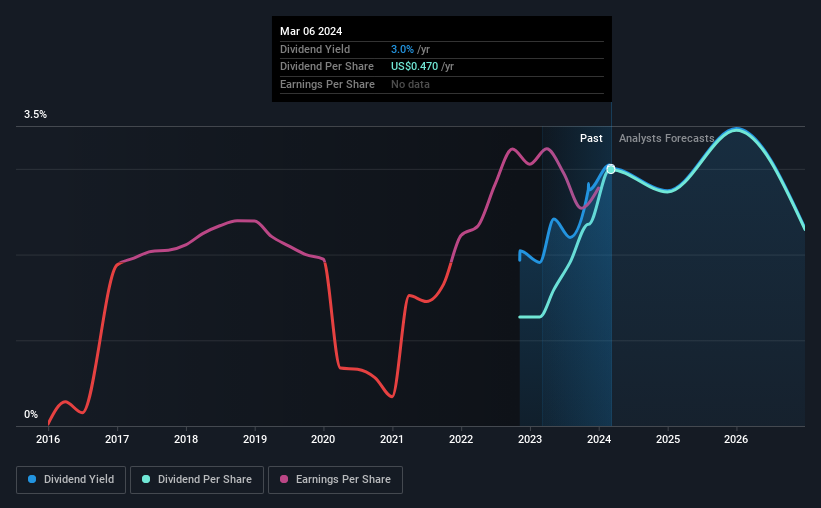Is It Smart To Buy Permian Resources Corporation (NYSE:PR) Before It Goes Ex-Dividend?
Permian Resources Corporation (NYSE:PR) is about to trade ex-dividend in the next four days. The ex-dividend date is one business day before the record date, which is the cut-off date for shareholders to be present on the company's books to be eligible for a dividend payment. The ex-dividend date is important because any transaction on a stock needs to have been settled before the record date in order to be eligible for a dividend. Thus, you can purchase Permian Resources' shares before the 12th of March in order to receive the dividend, which the company will pay on the 21st of March.
The company's next dividend payment will be US$0.15 per share, on the back of last year when the company paid a total of US$0.37 to shareholders. Based on the last year's worth of payments, Permian Resources has a trailing yield of 3.0% on the current stock price of US$15.63. We love seeing companies pay a dividend, but it's also important to be sure that laying the golden eggs isn't going to kill our golden goose! As a result, readers should always check whether Permian Resources has been able to grow its dividends, or if the dividend might be cut.
Check out our latest analysis for Permian Resources
If a company pays out more in dividends than it earned, then the dividend might become unsustainable - hardly an ideal situation. That's why it's good to see Permian Resources paying out a modest 27% of its earnings. Yet cash flow is typically more important than profit for assessing dividend sustainability, so we should always check if the company generated enough cash to afford its dividend. Thankfully its dividend payments took up just 34% of the free cash flow it generated, which is a comfortable payout ratio.
It's encouraging to see that the dividend is covered by both profit and cash flow. This generally suggests the dividend is sustainable, as long as earnings don't drop precipitously.
Click here to see the company's payout ratio, plus analyst estimates of its future dividends.
Have Earnings And Dividends Been Growing?
Companies with consistently growing earnings per share generally make the best dividend stocks, as they usually find it easier to grow dividends per share. If earnings fall far enough, the company could be forced to cut its dividend. With that in mind, we're encouraged by the steady growth at Permian Resources, with earnings per share up 3.2% on average over the last five years. Earnings per share growth in recent times has not been a standout. Yet there are several ways to grow the dividend, and one of them is simply that the company may choose to pay out more of its earnings as dividends.
Given that Permian Resources has only been paying a dividend for a year, there's not much of a past history to draw insight from.
Final Takeaway
Has Permian Resources got what it takes to maintain its dividend payments? Earnings per share growth has been growing somewhat, and Permian Resources is paying out less than half its earnings and cash flow as dividends. This is interesting for a few reasons, as it suggests management may be reinvesting heavily in the business, but it also provides room to increase the dividend in time. It might be nice to see earnings growing faster, but Permian Resources is being conservative with its dividend payouts and could still perform reasonably over the long run. It's a promising combination that should mark this company worthy of closer attention.
On that note, you'll want to research what risks Permian Resources is facing. For example - Permian Resources has 5 warning signs we think you should be aware of.
A common investing mistake is buying the first interesting stock you see. Here you can find a full list of high-yield dividend stocks.
Have feedback on this article? Concerned about the content? Get in touch with us directly. Alternatively, email editorial-team (at) simplywallst.com.
This article by Simply Wall St is general in nature. We provide commentary based on historical data and analyst forecasts only using an unbiased methodology and our articles are not intended to be financial advice. It does not constitute a recommendation to buy or sell any stock, and does not take account of your objectives, or your financial situation. We aim to bring you long-term focused analysis driven by fundamental data. Note that our analysis may not factor in the latest price-sensitive company announcements or qualitative material. Simply Wall St has no position in any stocks mentioned.

